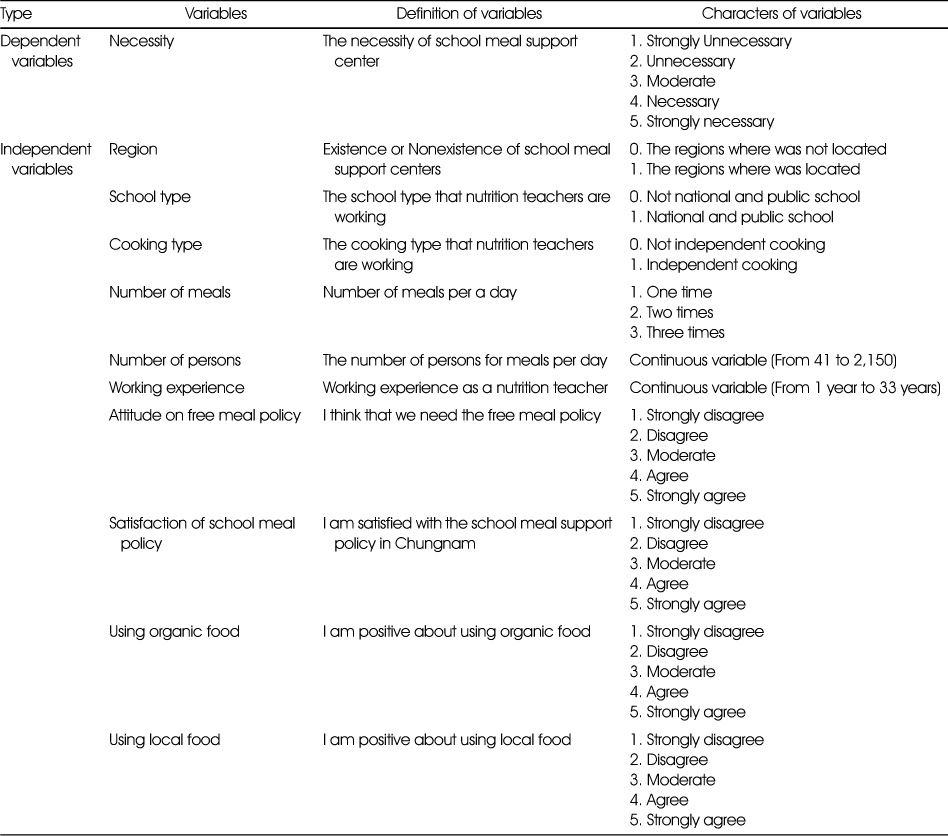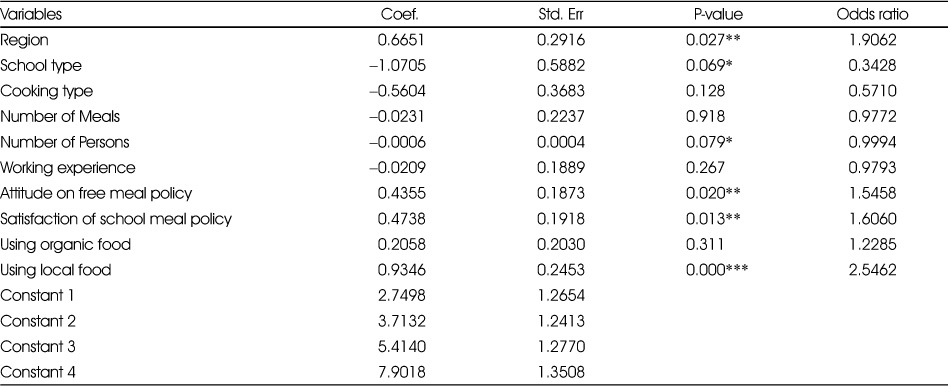Analysis of Nutrition Teachers' Awareness of Necessity for an Operating School Meal Support Center in Chungnam
Article information
Abstract
Objectives
We investigated the operation needs of school meal support centers (SMSC) in Chungnam-do based on analysis of nutrition teachers' perception of them.
Methods
The Chungnam government established the first SMSC in 2012. Thirteen SMSCs are currently being operated in Chungnam-do. To analyze the results quantitatively, we investigated nutrition teachers opinions regarding the necessity for SMSCs as a dependent variable and derived the independent variables based on the causal relationships with dependent variables using the ordered logit model. Those independent variables included region, school type, number of students, attitude regarding free meal policy, satisfaction with school meal policy, and preference for local food.
Results
Briefly, teachers in the region in which the SMSC was located more strongly supported the SMSC. In addition, teachers in public schools with a smaller number of students believed that having a SMSC is more beneficial, and that other variables also affected the necessity for SMSCs. Moreover, nutrition teachers preferred local foods rather than organic foods because of the unstable supply of organic foods.
Conclusions
Based on the results of this study, it was recommended that the local government implement the policy consistently. Moreover, it was recommended that the government operate the SMSC more efficiently, enhance the roles of the SMSC as the local organization responsible for student nutritional planing and expand the coverage of agricultural products.





